3.8: Power Up to Play
- Page ID
- 14080
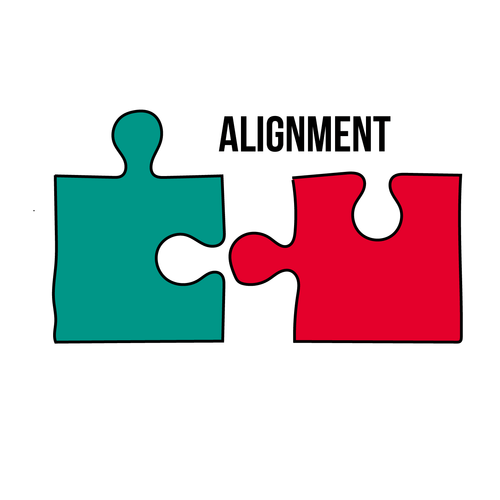
National Health Education Standards [NHES]
- 1.12.7 Compare and contrast the benefits of and barriers to practicing a variety of healthy behaviors, such as being physically active every day.
- 6.12.1-6.12.4 Setting goals to improve physical activity.
Wellness Guidelines
- Increase fruit and vegetable consumption
- Decrease sugary beverage consumption
- Increase frequency of exercise
- Decrease sedentary behavior

- Instruction: In a group or think-pair-share format, have participants discuss following questions. Acknowledge those who have progressed towards their goal(s) and encourage anyone who wants to change or modify their goal to get 1:1 support.
- Share: Let’s discuss our SMART Goals.
- How is it going with your current SMART goal?
- What are some ways you can improve progress towards your goal? (Grows)
- What are some ways you are doing well with progress towards your goal? (Glows)
GUIDELINE: Increase Fruit and Vegetable Consumption and Decrease Sugary Beverage Consumption
- Share: What guideline do you think is related to today’s lesson? Who has a SMART Goal related to this guideline?
- Instruction: Select one activity.
- Guideline Popcorn: The group lists all 8 guidelines rapidly in popcorn format.
- Guideline Charades: Divide participants into groups and assign each a guideline. Each group has to silently act out the guideline for the rest to guess.
- Two Truths and One Lie:
- Truth 1: Protein can come from both plant and animal sources.
- Truth 2: Carrots are a healthy source of carbohydrates.
- Lie: Drinking a sports drink or energy drink is better for you than drinking water after exercising.
- Share:
Good nutrition and hydration is essential to helping your body perform at its best during a workout or sporting event. Pure water is the best source of hydration for any level of physical activity. While pure water has no sugar, sports and energy drinks often have sugar. You can confirm this for yourself by checking out the nutrition label of a sports or energy drink.
- Questions to discuss and/or journal:
- Name some examples of sports drinks.
- Name some examples of energy drinks.
- What do you think is the difference between a sports drink and water? Is there any difference to your health?
- Is there a difference between sports and energy drinks?
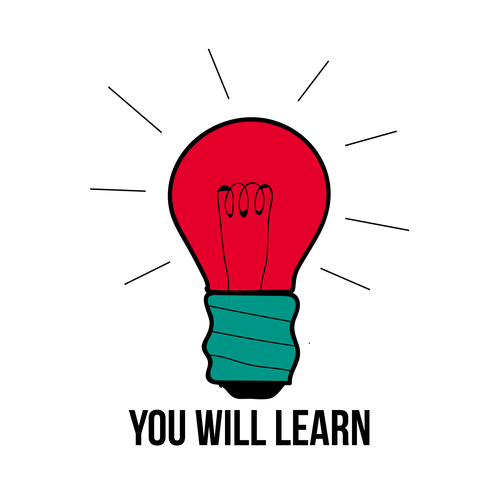
- Why nutrition is important for our physical performance, and how to best fuel and hydrate ourselves before, during, and after exercise.

- Worksheets
- Slide presentation
- Pictures of food items
- Buzzer
- Board
- Index cards
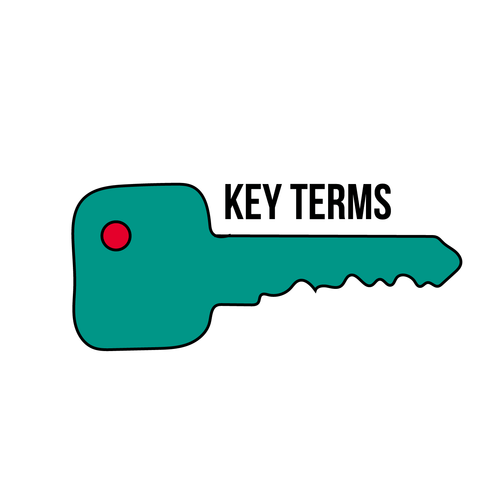
[As defined by: USDA & HHS, 2015; FDA, n.d.; HealthLink BC, 2017; Harvard School of Public Health, 2017; CDC, 2016; Merriam-Webster Dictionary; n.d.]
- Macronutrients: A dietary component that provides energy. Macronutrients include protein, fats, carbohydrates, and alcohol.
- Protein: One of the macronutrients and a major functional and structural component of every animal cell. It provides your body with the energy for your muscles and tissues to grow and heal and keeps your immune system strong [FDA, n.d.].
- Carbohydrate: One of the macronutrients and a source of energy. They include sugars, starches, and fiber. They provide your body with the energy to move, digest your food and maintain organ function [Harvard School of Public Health, 2017].
- Fat: One of the macronutrients and a source of energy [USDA & HHS, 2015]. Fat is important for building the vessels that transport nutrients throughout your body. It also provides helps your body absorb vitamins and other nutrients and cushions your organs [Coffman, n.d.].
- Glycogen: The form in which glucose is stored in animal tissues, muscle and liver tissues.
- Glucose: A carbohydrate (sugar) that serve as your main source of energy and comes from the food you eat.
- Sports Drink: A beverage often used to replace water (rehydrate) and electrolytes lost through sweating after activity.
- Electrolytes: Minerals, such as potassium, calcium, sodium, and magnesium, that keep the body's balance of fluids at the proper level.
- Energy Drink: A beverage often used to provide an extra boost in energy. It typically contains large amounts of caffeine, added sugars, other additives, and legal stimulants.
- Stimulant: A substance provides a temporary increase in someone’s functional activity.
- Caffeine: A stimulant often found in coffee and tea that makes a person feel more awake.
- Added sugar: Syrups and other caloric sweeteners used as a sweetener in other food products. Naturally occurring sugars such as those in fruit or milk are not added sugars.
- Serving Size: A standardized amount of a food, such as a cup or an ounce, that can help you calculate the calories and nutrients in that food.

- Do Now
- Fuel In & Fuel Out
- The Buzz on Sports & Energy Drinks
- What Do You Eat?
- Exit Ticket
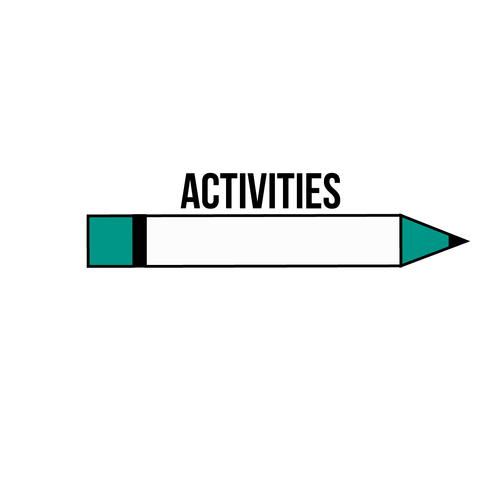
Do Now:
- Instruction:
- Have participants answer the following question on their worksheet or by sharing out loud.
- If you were planning a meal for someone who works out a lot, what foods would you include in that meal? Why?
- What foods do you like to eat before/after you exercise?
- Share:
- As you may have guessed, what you put into your body can affect how you feel during and after exercising.
- Today, we will be talking about the best ways to “fuel” ourselves before, during, and after exercise.
- Have participants answer the following question on their worksheet or by sharing out loud.
Good to Know: Fuel In & Fuel Out
- Share:
- Eating healthy foods will give your body the energy to exercise or enjoy playing a sport or game from start to finish. It can even help your body recover after physical activity.
- Eating macronutrients are important to help your body be energized during and after exercise. A macronutrient is a dietary component that provides energy. Macronutrients include protein, fats, carbohydrates, and alcohol [USDA & HHS, 2015].
- Why is macronutrient important? And what are some examples of foods that have each macronutrient?
|
Macronutrient |
Why is it important? |
|
Protein: One of the macronutrients and a major functional and structural component of every animal cell [USDA & HHS, 2015]. It provides your body with the energy for your muscles and tissues to grow and heal and keeps your immune system strong [FDA, n.d.]. |
· Protein helps your muscles replenish and rebuild after activity. Eating protein will help repair your muscles and help them grow. · Protein also helps give you more energy throughout the day and keeps you feeling fuller for longer. · Muscles are needed to move your body and compete in your sport (or workout). Without protein, your muscles would waste away and you would become weaker and unable to perform [FDA, n.d.]. |
|
Carbohydrate: One of the macronutrients and a source of energy. They include sugars, starches, and fiber. They provide your body with the energy to move, digest your food and maintain organ function (Harvard School of Public Health, 2017). |
· Nutrient-rich carbohydrates (veggies, fruits, and whole grains) provide fuel for your body during exercise [USDA & HHS, 2015]. · For example, you put gasoline in a car to make it run—just like you put food in your body to make it run. Putting the wrong fuel in a car or in your body can lead to poor performance or a broken vehicle or body. |
|
Fat: One of the macronutrients and a source of energy (USDA & HHS, 2015). Fat is important for building the vessels that transport nutrients throughout your body. It also provides helps your body absorb vitamins and other nutrients and cushions your organs [Colman, n.d.]. |
· Fats are the major source of your body’s energy [Harvard Medical School, 2017]. · Fat protects your organs and keeps your body warm by building cell membranes [American Heart Association, n.d.]. · Fats also help your body absorb nutrients and produces hormones. · For example, when your body doesn’t have enough carbohydrates, your body turns to fat as a backup energy source [Harvard Medical School, 2017].
|
- Share:
- When we are physically active for a long period of time, like playing a volleyball game, or a long walk it is important that before, during and after the activity we are properly nourished and hydrated. (American Dietetic Association, 2009)
- In other words, there are healthy ways to eat and drink to perform well and recover after being physically active.
- When we eat foods rich with carbohydrates and proteins we can easily, replenish our energy and build and repair tissue.
- Let's think about some foods we can eat to help us before, during, and after exercise to help maintain blood sugar, your concentration during exercise, and improve recovery time.
- While these are general tips to keep in mind, everyone has different goals for themselves. What is healthy for someone else’s body may not necessarily be what’s healthiest for you. It is best to define what being healthy means for you!
Real World Relevance: Hydrate to Play
- Share:
- Raise your hand if you think there is a difference between a sports drink and an energy drink.
- If you raised your hand, you are right!
- After the vigorous activity, like an intense aerobics class, or a soccer match sometimes people drink a sports drink instead of water to rehydrate. Typically, if you are really sweaty and thirsty you may need to replace electrolytes.
- Electrolytes are minerals, like potassium, calcium, sodium, and magnesium, that help keep your body fluids balanced and at the proper level.
- Meanwhile, an energy drink has large amounts of caffeine, added sugars, other additives. Some energy drinks even contain and legal stimulants such as guarana, taurine, and L-carnitine.
- These legal stimulants can make you feel very alert and can increase your blood pressure, heart rate, and breathing [CDC, 2018].
- Doctors recommend that teens should not consume energy drinks, yet not a lot of teens know this and between 30–50% of teens are still drinking energy drinks. (The American Academy of Pediatrics, 2018)
- A typical 12-ounce can of regular cola contains nearly 9 teaspoons of added sugars; a 20-ounce bottle contains 15.5 teaspoons of sugars.
- The American Heart Association recommends a maximum daily intake of six teaspoons of added sugars for women and nine teaspoons for men.
- For a 2,000-calorie diet, the 2015–2020 Dietary Guidelines recommend Americans consume no more than 50 grams, or about 12 teaspoons, of added sugar per day.
- In general, athletes should not substitute for energy drinks for water. Water or sports drinks are better for them than energy drinks [The National Federation of State High School Associations, n.d.].
- Doctors recommend that teens should not consume energy drinks, yet not a lot of teens know this and between 30–50% of teens are still drinking energy drinks. (The American Academy of Pediatrics, 2018)
- What are some other differences between the two (2) types of drinks? What are the possible health concerns with consuming too much of either drink?
|
Sports Drinks |
Energy Drinks |
|
Facts: · Can restore carbohydrate and electrolytes that the body uses during activity. · Often contain carbohydrates in the form of sugar, as well as electrolytes and sometimes protein, vitamins, or caffeine. · Might help you if you have sweated a lot during activities that are intense or last a long time. For example, a long-distance run or bike ride. |
Facts: · May contain extract from the guarana plant (similar to caffeine), sugar, and vitamins. · Between 30–50% of adolescents report consuming energy drinks even though it is not recommended. · Adults tend to consume two (2) cans per day when the recommendation is one (1) can. |
|
Concerns: · Contain sugars and calories, with little nutritional value. If you're not exercising long or hard, could cause unwanted weight gain and dental problems—cavities and gum disease. |
Concerns: · A single serving can have as much as 180 mg of caffeine which is more than double the maximum daily intake for children younger than age 12. · For adults, a dose of caffeine between 250-500 mg could produce mild to moderate symptoms—jitters, anxiety, heart palpitations, nausea, vomiting, etc. · May contain other ingredients, such as kola nut or guarana. which has had little research on how these may affect the body. · Contain sugars and calories, with little nutritional value. If you're not exercising long or hard, could cause unwanted weight gain and dental problems—cavities and gum disease. · Can experience withdrawal symptoms if don’t have them after getting used to having them. Symptoms include headaches, feeling tired, having trouble concentrating, and feeling grumpy. · Caffeine may make it harder to sleep or you may feel you need less sleep which can lead to sleep deprivation. |
Sources:
- Caffeine Informer. (n.d.). Caffeine Overdose Symptoms: Signs, Cases, Prevention. Retrieved From: https://www.caffeineinformer.com/caf...ts-and-fiction
- (2016). Energy drink. Retrieved From: https://www.cdc.gov/healthyschools/nutrition/energy.htm
- HealthLink BC. (2017). Energy and sports drinks. Retrieved From: https://www.healthlinkbc.ca/health-topics/abo4575
- National Federation of State High School Associations. (2014). Position Statement and Recommendations for the Use of Energy Drinks by Young Athletes. Retrieved From: asaa.org/wp-content/uploads/s...g-athletes.pdf
- Schneider MB, Benjamin HJ. Clinical Report–Sports Drinks and Energy Drinks for Children and Adolescents: Are They Appropriate? The American Academy of2011;127(6):1182–1189.
- Share:
- It is recommended that teens and children limit the amount of caffeine they consume (CDC, 2016). In fact, it is recommended that teens between the ages 12–18 years should not exceed 100 mg of caffeine a day, which is the amount of caffeine in a cup of coffee (The American Academy of Pediatrics, 2009).
- The 2015-2020 Dietary Guidelines tell us that moderate coffee consumption is up to three to five 8-oz cups/day or providing up to 400 mg/day of caffeine is considered part of a healthy eating plan.
- The recommendation for adults of caffeine is between 300 mg – 400 mg. The research behind this number actually bases on a person’s weight [Heckman, Weil, De Mejia, 2010].
- What do you think are some health concerns if you consume too much caffeine? (CDC, 2016; HealthLink BC, 2017)
- Higher blood pressure and other heart complications
- Sleep problems
- Increase blood sugar
- Anxiety
- Dehydration
- Given the possible health concerns with sports and energy drinks, what drink would be a healthier alternative for hydration? Water!
- Water is usually the best choice before, during, and after physical activity. Stay hydrated by drinking 1 cup of water every hour.
- What are some benefits of drinking water?
- Allowing our body to perform its many functions
- Keeping temperature normal
- Cushioning joints/organs
- Protecting the spinal cord and other important tissues
- Get rid of waste through urination (CDC, 2016)
- What are some ways you can remind yourself to stay hydrated with water?
- Carry around a water bottle
- Set timer/reminder on phone/laptop
- Drink water every time you have a meal/snack
- Squeeze some fruits into the water for some taste
- Ask for water instead of ordering a drink at restaurants
- Put water in easy-to-reach places (and hide the sugary beverages)
- It is recommended that teens and children limit the amount of caffeine they consume (CDC, 2016). In fact, it is recommended that teens between the ages 12–18 years should not exceed 100 mg of caffeine a day, which is the amount of caffeine in a cup of coffee (The American Academy of Pediatrics, 2009).
Hands-On: Eat to Play
- Share:
- Focus on drinking water and consuming small portions of snacks with carbohydrates before any physical activity.
- Why? Because during play, the carbohydrates will provide energy, the water will provide hydration and you’ll be physically comfortable (neither hungry nor too full).
- What types of foods would be good to have after games? Focus on fluids, carbohydrate, fat, and protein after physical activity.
- Why? To ensure muscles are provided with energy and nutrients needed for recovery and for the next activity. Muscles are very receptive to storing carbohydrates and taking up the protein (amino acids) shortly after exercise.
- Let's talk about food now. How many of you eat before, during or after working out or exercising or playing? Let’s learn about what is healthiest for us to eat. Remember our bodies need macronutrients for fuel to perform. The three macronutrients are protein, carbohydrates, and fat.
- We are going to look at some different food items and when to eat them, before or after working out.
- Set Up:
- Write on the board two (2) columns, “Before Physical Activity” and “After Physical Activity”.
- Provide pictures of foods of fat, carbohydrates, and protein with tape or magnets
- Pictures can include:
- Water
- Sports drinks
- Fruits
- Vegetables
- Bagels, bread, pasta
- Peanut butter, honey,
- Trail mix (seeds/nuts, dried fruit)
- Granola bars
- Yogurt, yogurt tubes
- Milk, chocolate milk, smoothies
- Rice, quinoa, sweet potatoes,
- Salmon, tuna, roasted chicken
- Hard boiled eggs, scrambled eggs with toast
- Lean meat sandwiches
- Avocados
- Meat with salad
- Instruction:
- Divide participants into two (2) groups.
- Have participants use a buzzer to take turns in taping the different foods in the two different categories of foods what to eat before and after physical activity.
- Share:
- At the end of the activity, discuss which types of foods are fats, carbohydrates, and
- For example, carbohydrates include bagels, bread, and pasta, this can provide energy for the body. Fats are trail mix, granola bars, and salmon, this can absorb nutrients when the body is recovering. Protein includes tuna, chicken, eggs, and meat, this helps muscle recovery.

Exit Ticket:
- Instruction:
- Have participants write on their worksheet or share out loud the following question(s).
- What’s a food of carbohydrates, and how does it benefit your body for physical activity?
- What’s a food of protein, and how does it benefit your body for physical activity?
- What’s a food of fat, and how does it benefit your body for physical activity?
- After participating in any physical activity, what will you choose water, sports drink or energy drink? Why?
- Have participants write on their worksheet or share out loud the following question(s).
Bibliography
- American Heart Association. (n.d.). Dietary Fats. Retrieved From: https://healthyforgood.heart.org/eat...s/dietary-fats
- Caffeine Informer. (n.d.). Caffeine Overdose Symptoms: Signs, Cases, Prevention. Retrieved From: https://www.caffeineinformer.com/caf...ts-and-fiction
- Center for Disease Control and Prevention. (2016). The buzz on energy drinks. Retrieved From: https://www.cdc.gov/healthyschools/nutrition/energy.htm
- Center for Disease Control and Prevention. (2016). Water & nutrition. Retrieved From: https://www.cdc.gov/healthyschools/nutrition/energy.htm
- Harvard School of Public Health. (n.d.). Carbohydrates. Retrieved From: https://www.hsph.harvard.edu/nutritionsource/carbohydrates/
- Brown University Health Promotion. Energy Drinks. http://www.brown.edu/Student_Services/Health_Services/Health_Education/alcohol,_tobacco,_&_other_drugs/energy_drinks.php.
- Harvard University. (n.d.). Types of Fat. Retrieved From: https://www.hsph.harvard.edu/nutriti.../types-of-fat/
- Harvard Medical School. (2017). The Truth About Fats. Retrieved From: https://www.health.harvard.edu/stayi...s-bad-and-good
- Heckman, M. A., Weil, J. and De Mejia, E. G. (2010), Caffeine (1, 3, 7-trimethylxanthine) in Foods: A Comprehensive Review on Consumption, Functionality, Safety, and Regulatory Matters. Journal of Food Science, 75: R77–R87. doi: 10.1111/j.1750-3841.2010.01561.
- Merriam Webster Dictionary. (n.d.). Stimulant. Retrieved From: Merriam-Webster Dictionary. Circulate. Retrieved From: https://www.merriam-webster.com/dictionary/circulate
- National Federation of State High School Associations. (2014). Position Statement and Recommendations for the Use of Energy Drinks by Young Athletes. Retrieved From: asaa.org/wp-content/uploads/s...g-athletes.pdf
- Schneider MB, Benjamin HJ. Clinical Report–Sports Drinks and Energy Drinks for Children and Adolescents: Are They Appropriate? Pediatrics. 2011;127(6):1182–1189
- Seifert SM, Schaechter JL, Hershorin ER, Lipshultz SE. Health effects of energy drinks on children, adolescents, and young adults. Pediatrics. 2011: peds. 2009–3592.
- Schneider MB, Benjamin HJ. Clinical Report–Sports Drinks and Energy Drinks for Children and Adolescents: Are They Appropriate? The American Academy of2011;127(6):1182–1189.
- US Food & Drug Administration. (n.d.). Protein. Retrieved From: www.accessdata.fda.gov/scrip...ts/Protein.pdf.
- S. Department of Agriculture & U.S Department of Health and Human Services. (2015). Dietary Guidelines for Americans. Retrieved From: https://health.gov/dietaryguidelines/2015/resources/2015-2020_Dietary_Guidelines.pdf
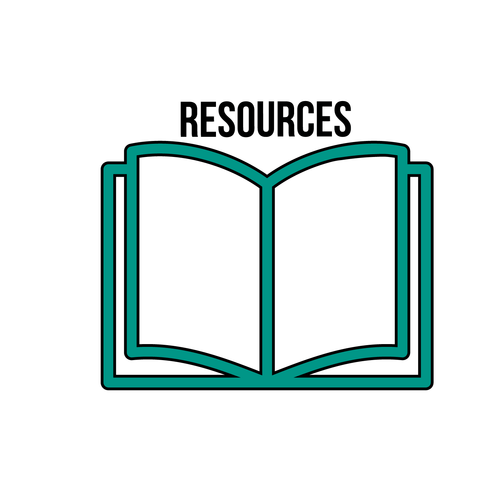
- Center for Disease Control and Prevention. (2016). Infographic for Buzz on Energy Drink. Retrieved From: www.cdc.gov/healthyschools/n...nfographic.jpg
- (n.d.). Photos. Retrieved From: Pictures can be used from www.choosemyplate.gov/content/food-gallery
- TED-Ed. (2016). What would happen if you didn’t drink water – Mia Nacamuli. Retrieved From: youtu.be/9iMGFqMmUFs
This lesson was created in partnership with Albert Einstein College of Medicine Department of Epidemiology and Population Health with funding support by the National Institutes of Health NIDDK Grant R01DK097096.

